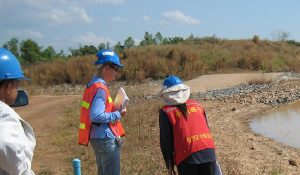ENER-G’s US arm wins college deal

SUSTAINABLE energy pioneer ENER-G’s new US business has won a $6.3m contract in Jersey City.
The deal between ENER-G Inc and Saint Peter’s College, New Jersey, is for an energy services contract which will cut its carbon footprint.
ENER-G will fund, supplyand install clean technology that will reduce the college’s carbon emissions by 2,886 metric tonnes per year. This will equate to the carbon saving benefits of a 615 acre pine forest.
The cost is partially offset by two substantial clean energy grants from the New Jersey’s Clean Energy Program and Federal Tax Credits, all of which total $1.86m.
The project includes the installation of a 200kW solar photovoltaic system, together with an ENER-G trigeneration plant, designed and manufactured in Salford, to supply low carbon heat, electricity and cooling for academic buildings on the West Campus.
The College will generate its own 2,454 MWh secure supply of electricity from two natural gas driven 160 kW ENER-G trigeneration units – achieving more than twice the efficiency of conventional power generation.
Together with the solar panels and installation of energy efficient lighting, this will dramatically reduce Saint Peter’s dependence on grid generated electricity.
ENER-G is partnering with a number of local contractors and consultants on the nine month program, which is scheduled for completion in summer 2012.
Chris Hayton, business development director at ENER-G Group Inc said: “
“We are delighted to open our new ENER-G Inc business in the USA and to partner with Saint Peter’s College and local engineering businesses and suppliers to deliver this complex energy services contract.
“We will continue to grow, and fund and deliver low and zero carbon projects across the Eastern Seaboard, exporting our UK technologies and expertise.”
Eugene Cornacchia, president of Saint Peter’s College, said: “Each green initiative on our campus diverts resources from unsustainable projects to renewable, cost effective ones. Beyond the savings and the environmental benefits, these initiatives also create learning opportunities for the students.”







